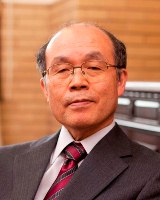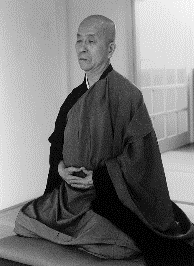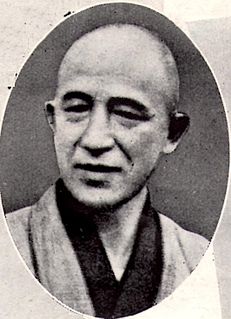 W
WMasaharu Anesaki , also known under his pen name "Chōfū Anesaki" , was a leading Japanese intellectual and scholar of the Meiji period. Anesaki is credited as being the father of religious studies in Japan, but also wrote on a variety of subjects including culture, literature, and politics. He was also a member of the International Committee on Intellectual Cooperation of the League of Nations.
 W
WChizen Akanuma was a Japanese Buddhist scholar and priest within the Ōtani-ha branch of Shin Buddhism, and a professor of Otani University who specialized in pre-sectarian Buddhism.
 W
WDōgen Zenji, also known as Dōgen Kigen (道元希玄), Eihei Dōgen (永平道元), Kōso Jōyō Daishi (高祖承陽大師), or Busshō Dentō Kokushi (仏性伝東国師), was a Japanese Buddhist priest, writer, poet, philosopher, and founder of the Sōtō school of Zen in Japan.
 W
WHakuin Ekaku was one of the most influential figures in Japanese Zen Buddhism. He is regarded as the reviver of the Rinzai school from a moribund period of stagnation, refocusing it on its traditionally rigorous training methods integrating meditation and koan practice.
 W
WEnchin (円珍) (814–891) was a Japanese Buddhist monk who founded of the Jimon school of Tendai Buddhism and Chief Abbot of Mii-dera at the foot of Mount Hiei. After succeeding to the post of Tendai zasu , in 873, a strong rivalry developed between his followers and those of Ennin's at Enryaku-ji.
 W
WTōrei Enji (東嶺円慈) was an eminent Japanese Zen Buddhist monk, teacher, author, painter and calligrapher. He was the chief disciple and Dharma heir of famed Japanese Rinzai master Hakuin Ekaku (1685-1786) and was a major figure in the revival of the Rinzai school in eighteenth century Japan. He is also known as the author of an influential text on Zen practice called "The Undying Lamp of Zen", which is his magnum opus and presents the comprehensive system of Rinzai Zen as it existed at the time of Hakuin.
 W
WEnnin , better known in Japan by his posthumous name, Jikaku Daishi (慈覺大師), was a priest of the Tendai school of Buddhism in Japan, and its third Zasu . Ennin was instrumental in expanding the Tendai Order's influence, and bringing back crucial training and resources from China particularly esoteric Buddhist training, and Pure Land teachings.
 W
WInoue Enryō was a Japanese philosopher, Shin Buddhist priest and reformer, educator, and royalist. A key figure in the reception of Western philosophy, the emergence of modern Buddhism, and the permeation of the imperial ideology during the second half of the Meiji Era. He is the founder of Toyo University and the creator of Tetsugaku-dō Park 哲学堂公園 in Tokyo. Because he studied apparitions in order to debunk superstitions, he is sometimes called Professor Specter and the Spook Doctor .
 W
WKeian Genju was a Japanese Buddhist monk who studied classics under Ishō at Nanzen-ji.
 W
WEkai Kawaguchi was a Japanese Buddhist monk who was famed for his four journeys to Nepal and two to Tibet. He was the first recorded Japanese citizen to travel to either country.
 W
WKūkai, also known posthumously as Kōbō Daishi , was a Japanese Buddhist monk, calligrapher, and poet who founded the esoteric Shingon school of Buddhism. He travelled to China, where he studied Tangmi under the monk Huiguo. Upon returning to Japan, he founded Shingon—the Japanese branch of Vajrayana Buddhism. With the blessing of several Emperors, Kūkai was able to preach Shingon teachings and found Shingon temples. Like other influential monks, Kūkai oversaw public works and constructions. Mount Kōya was chosen by him as a holy site, and he spent his later years there until his death in 835 C.E.
 W
WMasatoshi Ueki is a Japanese scholar in Buddhist studies.
 W
WSengaku Mayeda is a Japanese writer, philosopher and teacher, known for his writings on Indian philosophy and Adi Shankara. He was honoured by the Government of India, in 2014, by bestowing on him the Padma Shri, the fourth highest civilian award, for his services to the fields of literature and education. He is the fourth Japanese to be honoured with Padma Shri, after Taro Nakayama, Shoji Shiba and Prof. Noboru Karashima. He is also a recipient of the Third Order of Merit with the Middle Cordon of the Rising Sun of the Government of Japan, which he received in 2002.
 W
WSenshō Murakami was a Meiji period Buddhist scholar and Jodo Shinshu priest. He famously introduced Western scholarship on Buddhism for Japan, and because of this was forced to resign from Japanese Buddhist priesthood. However, ten years later he was reinstated into the priesthood. He belonged to the Ōtani-ha branch of Shin Buddhism.
 W
WHajime Nakamura was a Japanese Orientalist, Indologist, philosopher and academic of Vedic, Hindu and Buddhist scriptures.
 W
WNanjō Bun'yū (南条文雄) was a Buddhist priest and one of the most important modern Japanese scholars of Buddhism. Nanjō was born to the abbot of Seiunji Temple (誓運寺), part of the Shinshu Ōtani sect (真宗大谷派) of the Higashi Honganji (東本願寺) branch of Jodo Shinshu.
 W
WKitarō Nishida was a Japanese moral philosopher and religious scholar. He was the founder of what has been called the Kyoto School of philosophy. He graduated from the University of Tokyo during the Meiji period in 1894 with a degree in philosophy. He was named professor of the Fourth Higher School in Ishikawa Prefecture in 1899 and later became professor of philosophy at Kyoto University. Nishida retired in 1927. In 1940, he was awarded the Order of Culture. He participated in establishing the Chiba Institute of Technology (千葉工業大学) from 1940.
 W
WGudo Wafu Nishijima was a Japanese Zen Buddhist priest and teacher.
 W
WEshin Nishimura is a Japanese Rinzai Zen Buddhist priest, the former president of Hanazono University in Kyoto, Japan, and also a major modern scholar in the Kyoto School of thought. A current professor of the Department of Buddhism at Hanazono University, he has lectured at universities throughout the world on the subject of Zen Buddhism. The author of many books, most written in the Japanese language, Nishimura has been a participant in many dialogues on the relationship of Zen to Christianity and Western philosophy.
 W
WKeiji Nishitani was a Japanese university professor, scholar, and Kyoto School philosopher. He was a disciple of Kitarō Nishida. In 1924 Nishitani received his doctorate from Kyoto Imperial University for his dissertation "Das Ideale und das Reale bei Schelling und Bergson". He studied under Martin Heidegger in Freiburg from 1937 to 1939.
 W
WSoyen Shaku was the first Zen Buddhist master to teach in the United States. He was a rōshi of the Rinzai school and was abbot of both Kenchō-ji and Engaku-ji temples in Kamakura, Japan. Soyen was a disciple of Imakita Kosen.
 W
WDaisetz Teitaro Suzuki , self-rendered in 1894 as "Daisetz", Japanese religious scholar, essayist, philosopher, translator, and writer. He practiced and studied Buddhism, however he didn't become a monk and remained secular as "Koji" (居士). He was a scholar and author of books and essays on Buddhism, Zen that were instrumental in spreading interest in Zen to the West. Suzuki was also a prolific translator of Chinese, Japanese, and Sanskrit literature. Suzuki spent several lengthy stretches teaching or lecturing at Western universities, and devoted many years to a professorship at Ōtani University, a Japanese Buddhist school.
 W
WTakakusu Junjirō , who often published as J. Takakusu, was a Japanese academic, an advocate for expanding higher education opportunities, and an internationally known Buddhist scholar. He was an active Esperantist.
 W
WHajime Tanabe was a Japanese a philosopher of science, particularly of mathematics and physics. In 1947 he became a member of Japan Academy, in 1950 he received the Order of Cultural Merit, and in 1957 an honorary doctorate from University of Freiburg.
 W
WMenzan Zuihō was a Japanese Sōtō Zen scholar and abbot of the Zenjo-ji and Kuin-ji temples active during the Tokugawa period.